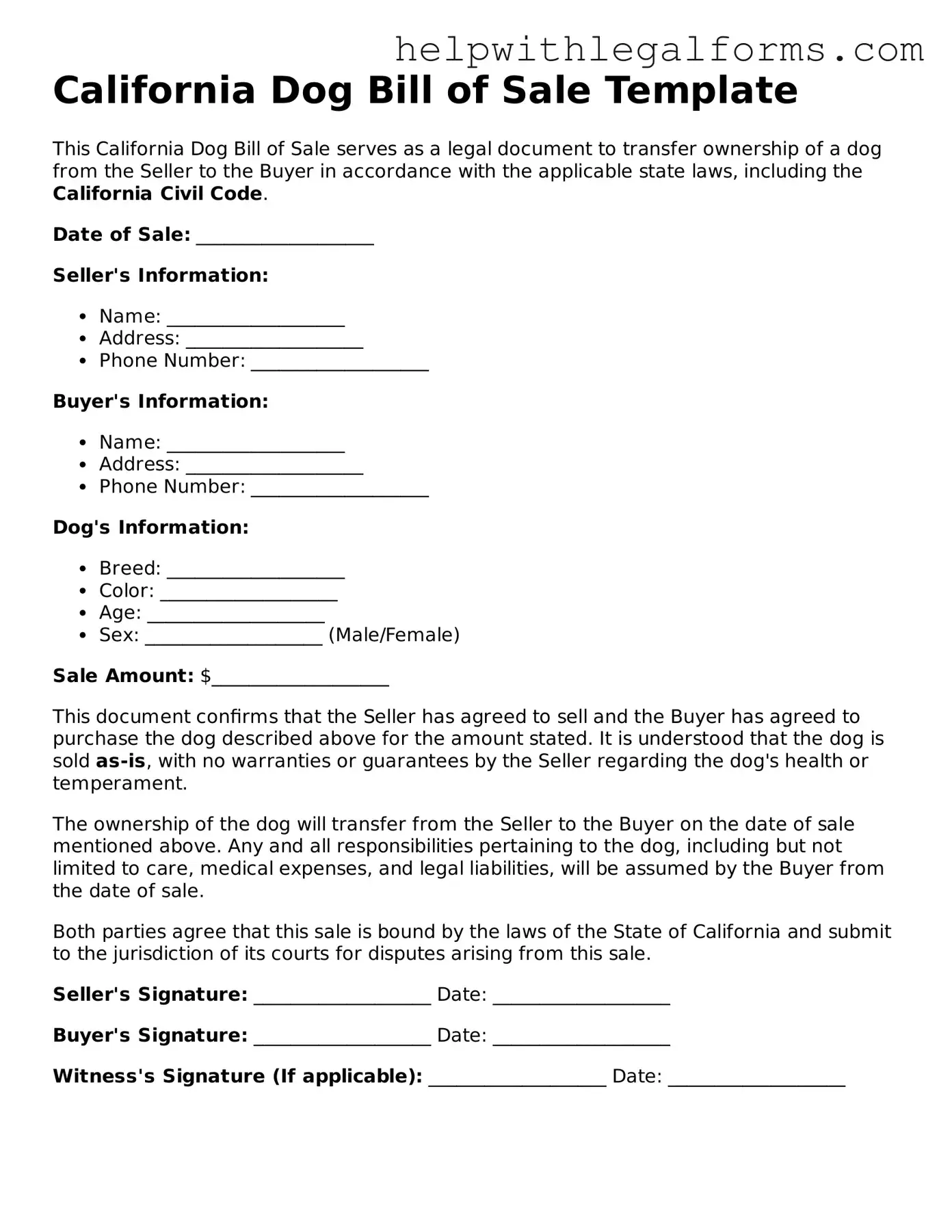What is a California Dog Bill of Sale?
A California Dog Bill of Sale is a legal document used to record the sale of a dog from one party, the seller, to another, the buyer, within the state of California. It serves as proof of purchase and transfers ownership of the dog from the seller to the buyer. This document typically includes details about the dog, such as breed, color, age, and health status, as well as information about the seller and buyer and the sale conditions.
Why do I need a Dog Bill of Sale in California?
Having a Dog Bill of Sale is crucial for several reasons. Firstly, it legally documents the transfer of ownership, providing clear evidence of the new owner. This can be especially important in disputes or if the dog is lost and later found. Additionally, the bill of sale can include specific details about the transaction, such as the sale date and price, and any agreements between the buyer and seller regarding the dog's future care and conditions of the sale.
What information should be included in a Dog Bill of Sale?
A comprehensive Dog Bill of Sale should contain the full names and contact information of both the buyer and the seller, a detailed description of the dog (including breed, color, age, and any identifying marks), the sale price, the date of the sale, and any warranties or representations made by the seller regarding the dog’s health and temperament. It's also helpful to include any terms or conditions related to the sale, such as return policies or health guarantee provisions.
Is a Dog Bill of Sale legally required in California?
While the state of California does not legally require a Dog Bill of Sale for every transaction involving a dog, having one is highly recommended. It provides legal protection and clarity for both the buyer and the seller. For significant transactions, particularly those involving purebred or high-value dogs, a bill of sale is a prudent document to articulate the agreement and protect both parties' interests.
How can I obtain a California Dog Bill of Sale form?
A California Dog Bill of Sale form can be drafted by the parties involved or with the help of a legal professional to ensure all necessary details are accurately included. Additionally, templates can be found online, but it's important to make sure any template is tailored to meet the specific requirements of the transaction and adheres to California state law.
Can I write my own Dog Bill of Sale?
Yes, you can write your own Dog Bill of Sale. However, it’s important to include all the necessary information and ensure that the document is clear and thorough to prevent future disputes. Consulting with a legal expert or using a well-crafted template as a guide can help ensure that your bill of sale covers all essential details and is legally sound.
What happens if I don’t use a Dog Bill of Sale?
Not using a Dog Bill of Sale can lead to various complications. Without this document, proving ownership of the dog or details about the sale could become challenging. This lack of documentation can be problematic in situations such as disputes over the dog’s condition, its return policy, or if its ownership is questioned. A bill of sale serves as a safeguard, providing a clear record of the transaction and ownership transfer.
Does the Dog Bill of Sale need to be notarized in California?
No, a Dog Bill of Sale does not typically need to be notarized in California to be considered valid. However, having the document notarized can add an additional layer of verification and can be helpful in adding to the document's credibility, should its validity ever be questioned in a legal setting.
